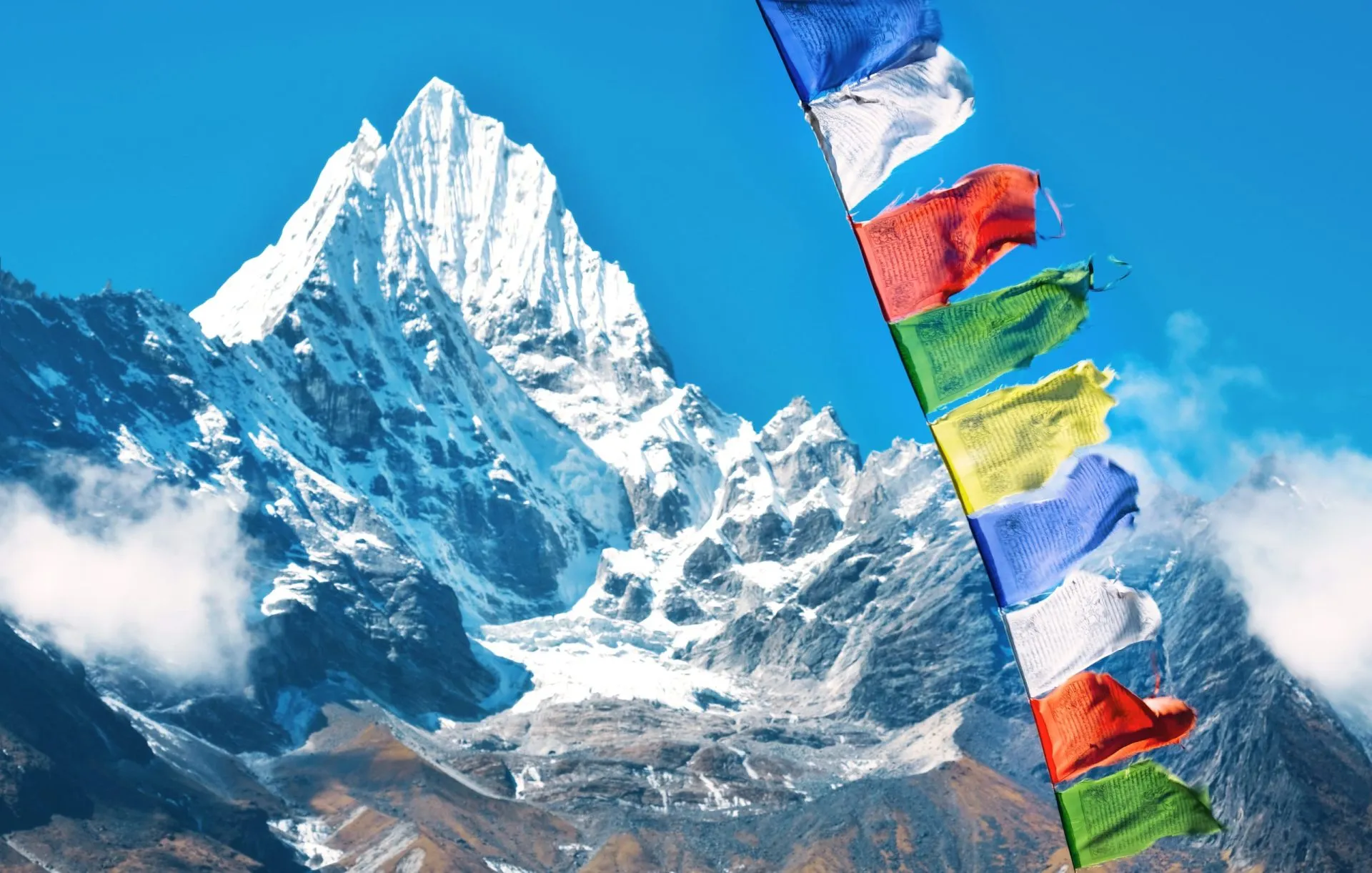Winding through the deep-carved valleys amidst the towering peaks of the Himalayas, the Everest Base Camp trek is a journey that resonates with adventure seekers worldwide. This trek offers intrepid travelers a chance to walk in the footsteps of legendary mountaineers and experience the grandeur of the world’s highest mountain, Mount Everest.
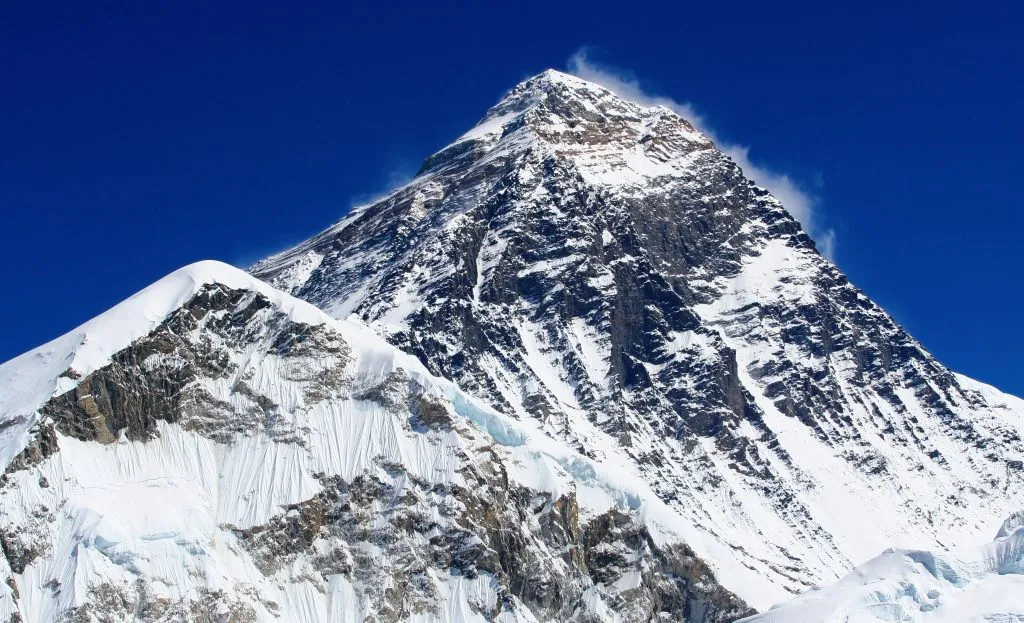
The allure of the EBC trek tempts up to 40,000 visitors annually, with all of them flocking there to experience the rich cultural tapestry of Nepal and understand the profound connection between the Sherpa community and the glorious mountains, the dwellings of their gods.
What is the Everest Base Camp (EBC)?
Everest Base Camp, commonly known as EBC, is the primary staging ground for mountaineers aiming to ascend Mount Everest. There are actually two Everest base camps located in the heart of the Himalayas: one in Nepal to the south and another in Tibet to the north. The Nepalese base camp is situated at an elevation of 5,364 meters (17,598 feet), while its Tibetan counterpart is slightly lower at 5,150 meters (16,896 feet).
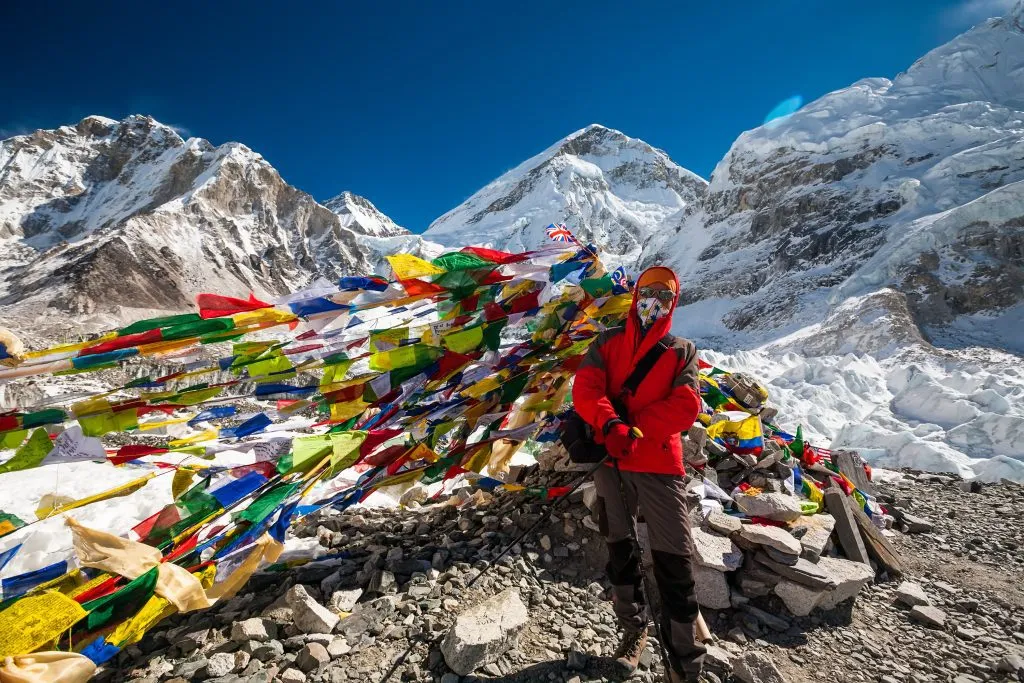
The one referred to as the EBC is usually the Nepalese one, as the Chinese pose stricter restrictions for outside visitors, making a visit to Tibet mostly a logistical nightmare that’s not worth all the drama. Since February 2019, the access has been completely closed off.
During the main climbing seasons, the base camp in Nepal transforms into a bustling hub. It’s not just a collection of tents but a vibrant community. Climbers from every corner of the world converge here, each with the shared goal of reaching the summit of the world’s highest peak. Amidst the preparations, there’s an exchange of stories, experiences, and anticipation of the challenging ascent ahead.
Historically, EBC has been a witness to numerous monumental moments in mountaineering. It has seen the highs of successful summits and the lows of tragic events. For instance, in April 2015, a devastating earthquake hit Nepal, triggering an avalanche on Pumori that swept through the South Base Camp, resulting in the loss of at least 19 lives. Such events have shaped the narrative of EBC over the years.
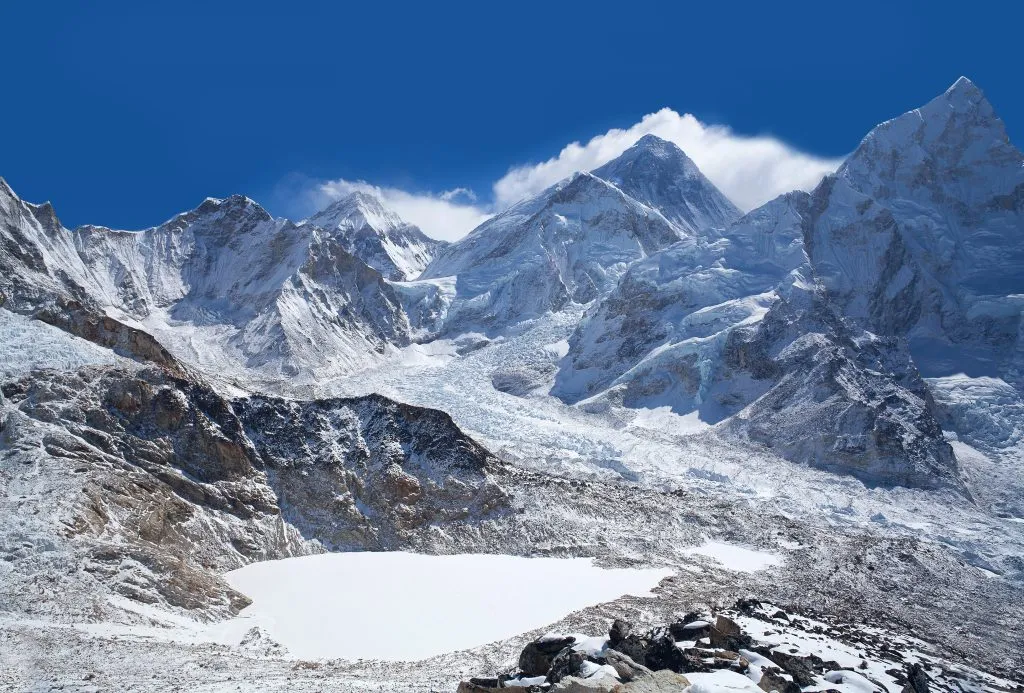
In recent times, environmental concerns have also come to the forefront. In June 2022, it was announced that the camp would be relocated 200-400m lower due to the rapid melting and thinning of the Khumbu Glacier, making the existing campsite potentially unsafe for trekkers.
Where does the EBC trek go?
The Everest Base Camp trek is a captivating journey through the heart of the Khumbu region in Nepal. Starting from Lukla, after a short flight from Kathmandu, trekkers set foot on a trail that takes them through a series of picturesque villages, dense forests, and across rushing rivers.
The initial phase of the trek leads to the bustling Sherpa town of Namche Bazaar, often considered the gateway to the high Himalayas. From here, the route meanders through villages like Tengboche, known for its iconic monastery, and Dingboche, which offers panoramic views of the Himalayan giants.
As trekkers move higher, they traverse through Lobuche and Gorakshep, the latter being the last stop before reaching the Everest Base Camp. Along the way, there are opportunities to ascend vantage points like Kala Patthar, which provides one of the most breathtaking views of Mount Everest.
Highlights of the EBC trek
Sagarmatha National Park
The park covers an expansive area of 1,148 km^2 (443 sq mi) in the Solukhumbu District. Its elevation ranges from 2,845 meters (9,334 feet) at its lowest to the towering 8,848 meters (29,029 feet) at the summit of Mount Everest.
The park is celebrated for its dramatic landscapes, encompassing majestic snow-capped peaks, glaciers, and deep valleys. Apart from Mount Everest, the park boasts seven other peaks over 7,000 meters tall.
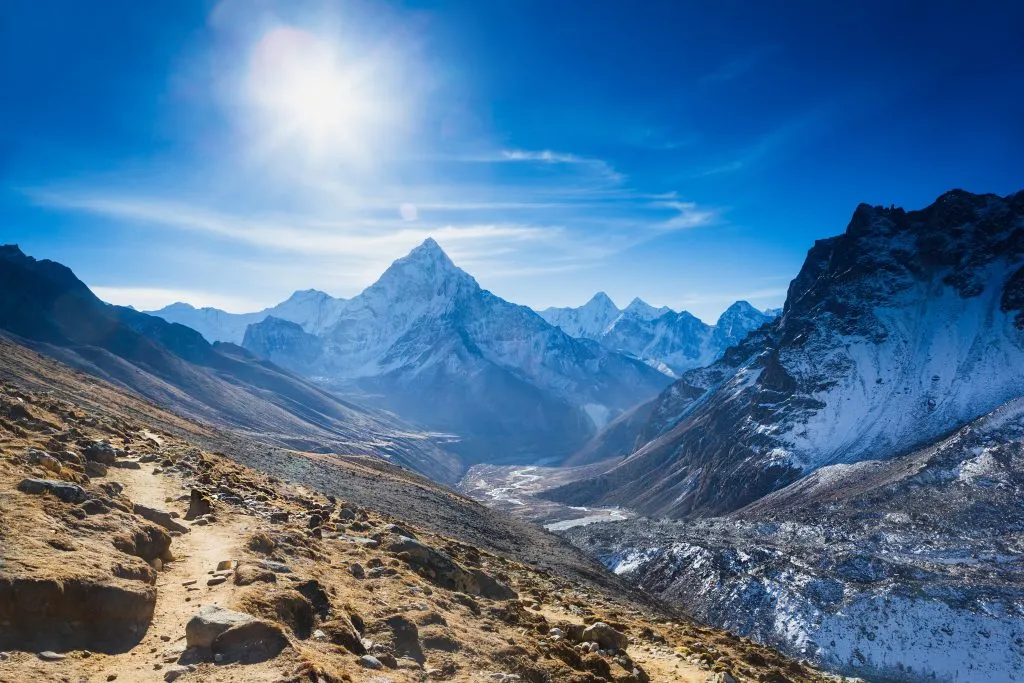
Historically, the park was established in 1976, and later, in 1979, it earned the distinction of being Nepal’s first national park inscribed as a Natural World Heritage Site. The park has always been a harmonious blend of nature and culture.
Over 2,500 Sherpa people reside within its boundaries, maintaining their traditional practices, including the restriction of animal hunting and slaughtering and revering all living beings. Their indigenous natural resource management practices have significantly contributed to the successful conservation of the park.
In terms of fauna, the park is a haven for bird enthusiasts, hosting 208 bird species, including the Impeyan pheasant, bearded vulture, snowcock, and alpine chough. It’s also home to ungulates like the Himalayan thar, Himalayan serow, and musk deer. The higher elevations provide a habitat for the snow leopard, while the lower forests are frequented by the Indian leopard.
Kathmandu
Kathmandu is every trekker’s first stop before venturing into the heart of the Himalayas. The vibrant capital city of Nepal is a fusion of history, culture, and modernity. With its ancient temples, bustling markets, and narrow winding streets, the city offers a sensory overload to visitors. As the starting point for most trekkers heading to EBC, Kathmandu is where preparations begin. But beyond the logistics, it’s a city that invites exploration, from the UNESCO World Heritage sites in the Kathmandu Valley to the local eateries serving traditional Nepali cuisine.
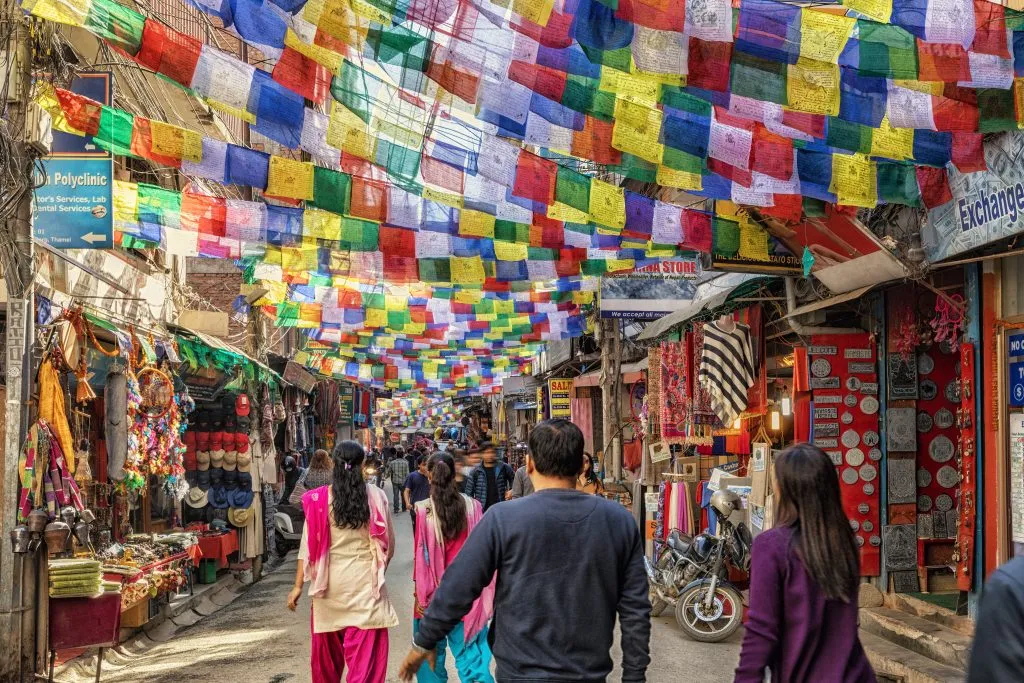
Lukla
Lukla is the gateway to the Everest region. Accessible by a thrilling flight that lands on one of the world’s most challenging airstrips, Tenzing-Hillary Airport, Lukla is where the trek truly begins. This small town, perched on the mountainside, is bustling with trekkers, porters, and local Sherpas, all gearing up for the journey ahead.
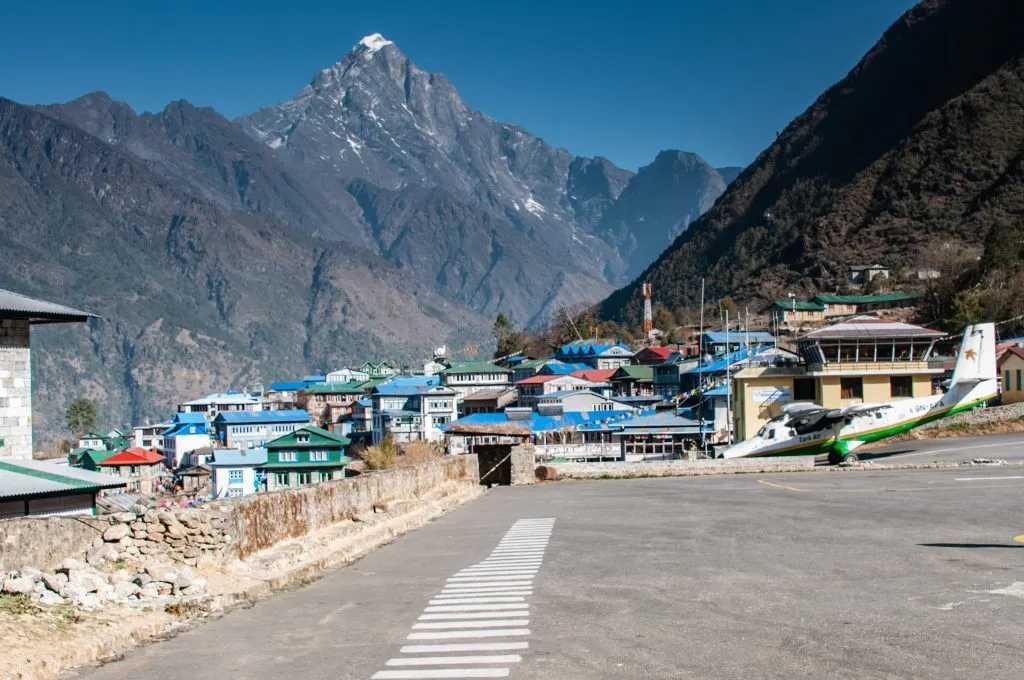
Namche Bazaar
Often referred to as the Sherpa Capital, Namche Bazaar is a colorful mountain town that serves as a vital trading hub and acclimatization stop for trekkers. With its terraced layout, Namche offers one of the first unobstructed views of the Himalayas’ giants. The town is equipped with cafes, gear shops, and even an ATM, which is a true rarity, making it a modern oasis in the heart of the Himalayas.
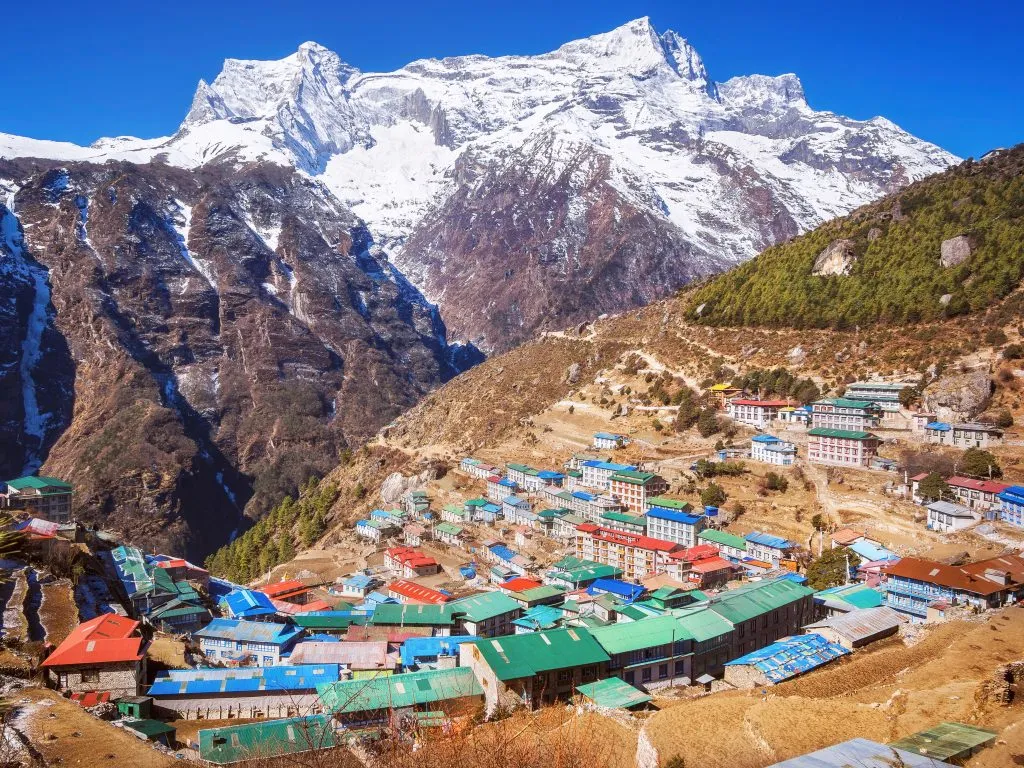
Tengboche
Tengboche is best known for its iconic monastery, the largest in the Khumbu region. With the backdrop of Ama Dablam, one of the most beautiful mountains in the Himalayas, the Tengboche Monastery is a spiritual center where trekkers often stop to soak in tranquility and partake in evening prayer ceremonies.
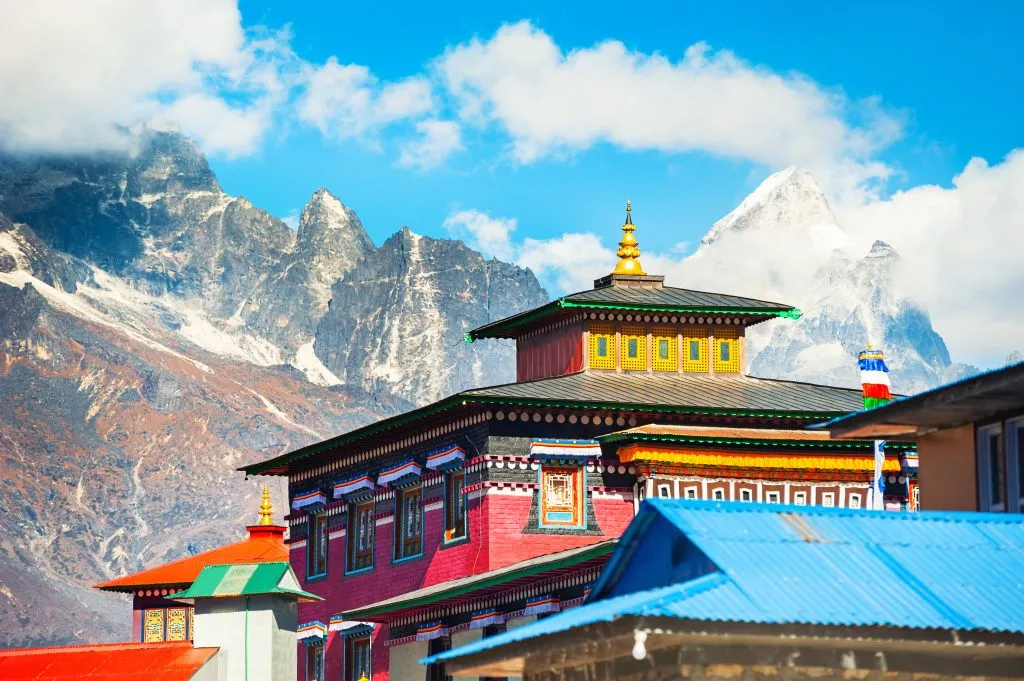
Dingboche
Adorning the Chukung Valley, Dingboche is a picturesque village amid the stone walls protecting barley, buckwheat, and potato fields. Often used as an acclimatization stop, Dingboche offers trekkers stunning views of Lhotse, Island Peak, and Ama Dablam, making it a serene resting point on the journey.
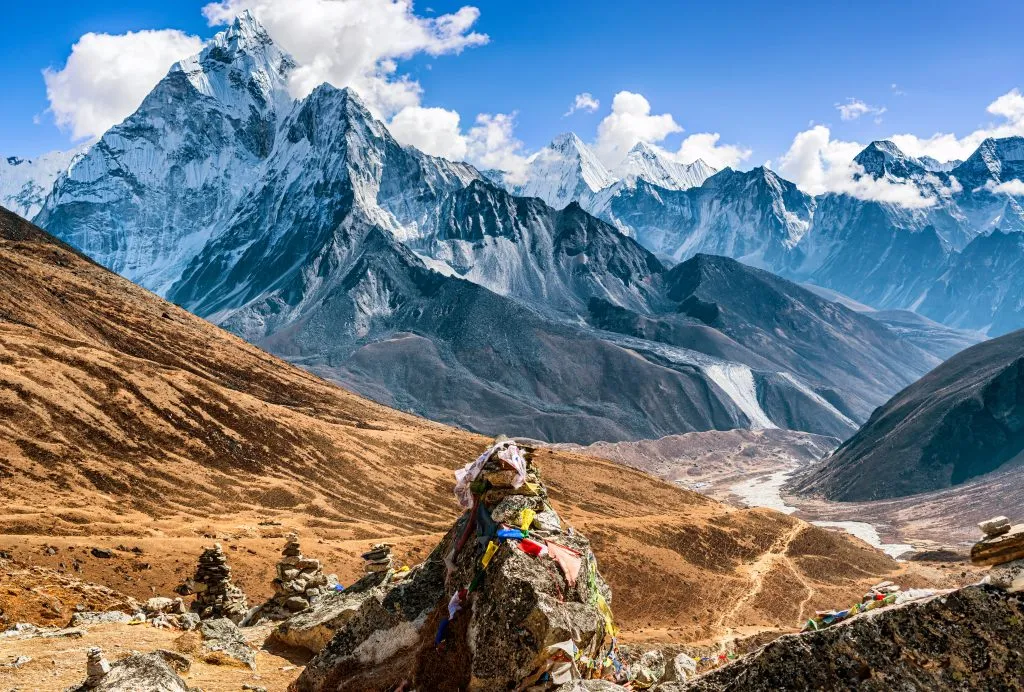
Gorakshep
The last stop before reaching Everest Base Camp, Gorakshep, is a small settlement beside a frozen lakebed. At an altitude of 5,164 meters, it’s the launching point for the final push to EBC and the ascent to Kala Patthar, offering close-up views of the Khumbu Glacier and the Everest massif.
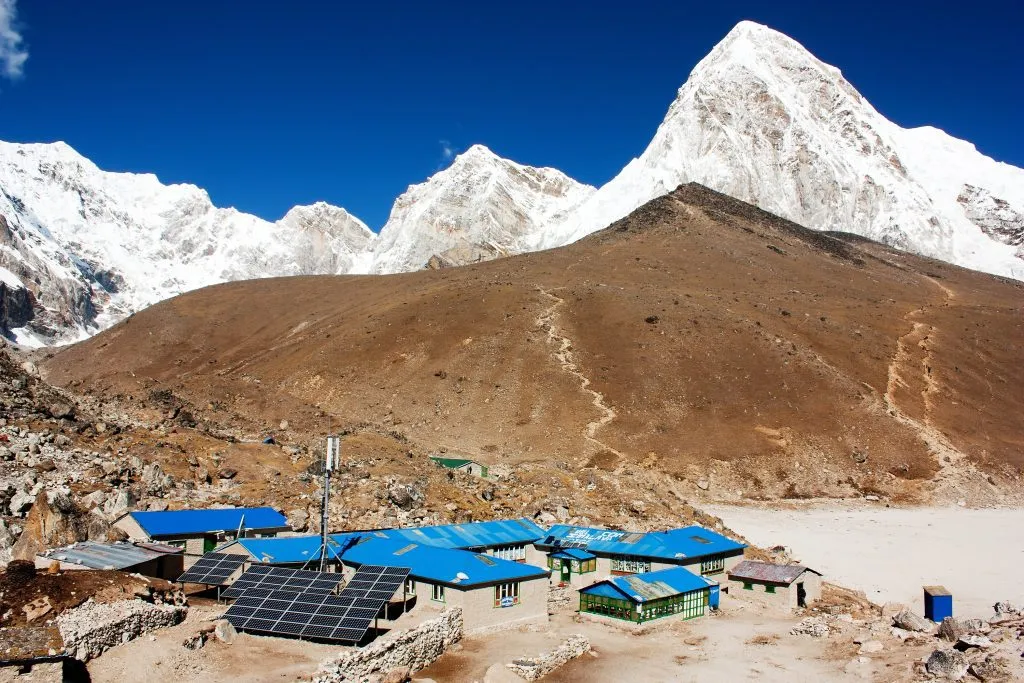
Kala Patthar
Often considered the highlight of the EBC trek, Kala Patthar stands at 5,643 meters and offers one of the most breathtaking panoramic views of Mount Everest and the surrounding peaks. As the sun rises or sets, the play of light on the snow-clad mountains is a sight to behold, making the ascent to Kala Patthar a must-do for every EBC trekker.
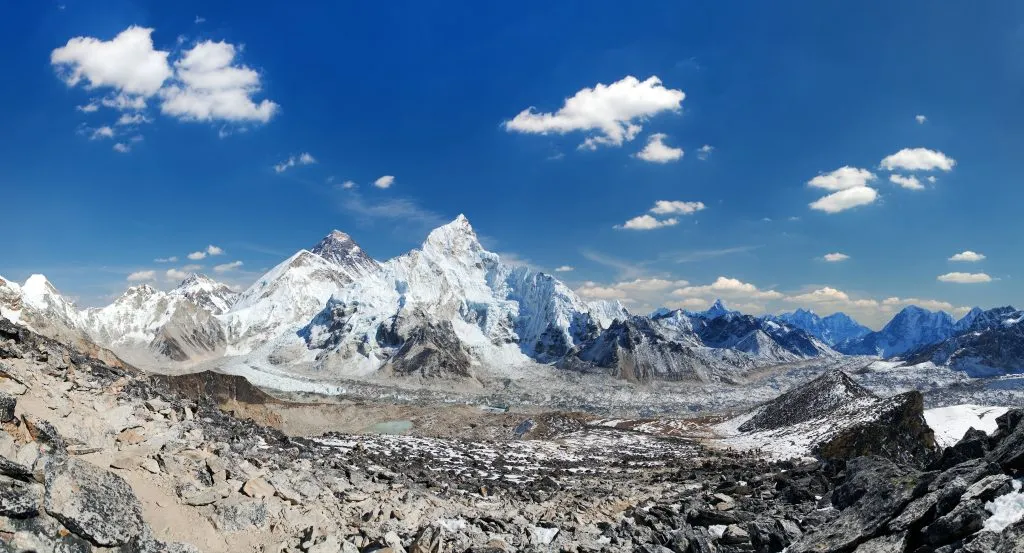
About Mount Everest
Mount Everest, the world’s highest peak, stands tall and majestic in the Himalayas, marking the boundary between Nepal and Tibet, an autonomous region of China. With an elevation of 8,848 meters (29,030 feet), it’s a marvel of nature that has captivated the imagination of adventurers and explorers for centuries.
The mountain was named in the 19th century after George Everest, a former Surveyor General of India. However, its local names carry deep cultural and religious significance. In Tibetan, it’s known as Chomolungma, translating to “Mother Goddess of the World”, while in Nepali, it’s called Sagarmatha.
Cultural significance
The Sherpa people, indigenous to the region, hold Mount Everest in high reverence. For them, it’s not just a mountain but a sacred entity. The Sherpas believe that the mountains are the abode of deities, and Mount Everest, being the highest, holds a special place in their spiritual beliefs. This profound connection between the Sherpa community and the mountains adds a layer of cultural and religious significance to the already awe-inspiring landscape.
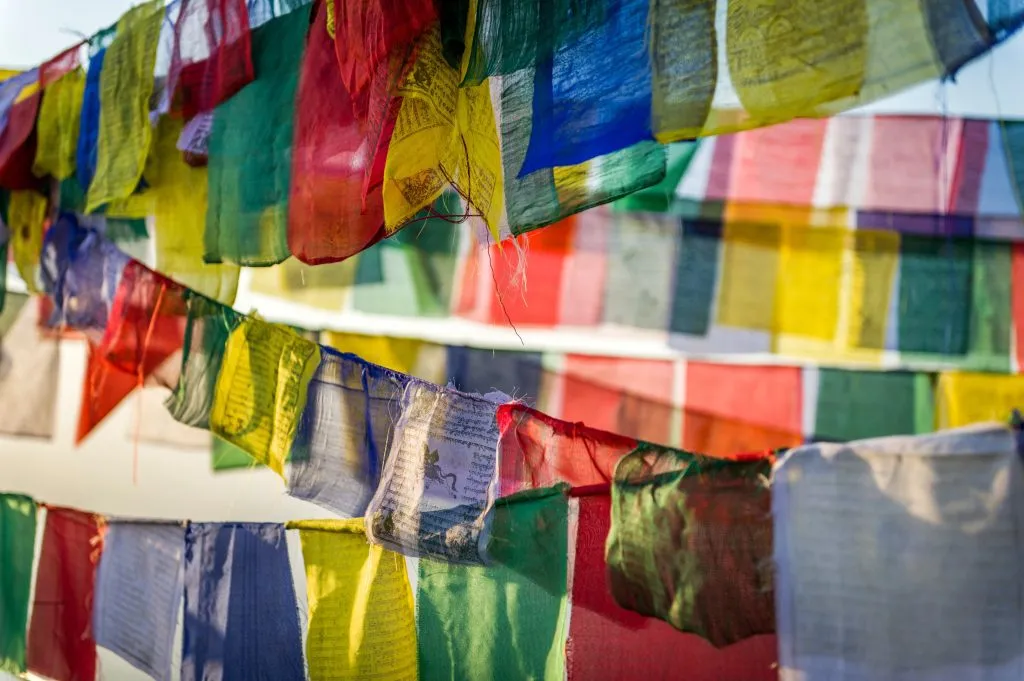
A brief history of climbing Mt. Everest
The conquest of Mount Everest has a rich history. The first successful ascent was made in 1953 by Sir Edmund Hillary from New Zealand and Tenzing Norgay, a Tibetan Sherpa guide. Their monumental achievement set the stage for numerous expeditions that followed.
However, climbing Everest is fraught with challenges. The altitude, extreme cold, and unpredictable weather conditions have made it a perilous endeavor. Despite these challenges, the allure of standing atop the world’s highest peak has drawn climbers from around the globe.

Over the years, the increasing popularity of climbing Everest has raised concerns. The mountain has witnessed traffic jams with climbers waiting for their turn to the summit. This has not only increased the risks but has also led to environmental concerns, with discarded equipment and waste affecting the pristine environment.
The Sherpa community, while benefiting from the climbing industry, has also faced challenges. They play a crucial role in the success of many expeditions, providing invaluable expertise and local knowledge. However, they also bear the brunt of the risks, often facing life-threatening situations.
EBC trek in numbers
- Total distance: The Everest Base Camp trek covers a distance of approximately 120 km (75 miles).
- Total ascent/descent: The cumulative ascent/descent over the trek’s course is somewhere in the region of 6,000 meters (19,700 feet).
- Duration: Trekkers usually need somewhere between 11 to 15 days to complete the entire trek.
- Average daily distance: Depending on the route taken, trekkers conquer 10-15 kilometers daily, including up to 600 meters of elevation.
- Highest point: Kala Patthar, which stands at an elevation of 5,640 meters (18,500 feet).
- Fitness difficulty: The Everest Base Camp trek is challenging due to its length, altitude, and the ruggedness of the terrain. Proper acclimatization is crucial to avoid altitude sickness. A moderate to high level of fitness is recommended.
- Technical difficulty: The trek is non-technical, meaning it doesn’t require specialized mountaineering skills or equipment. However, the trail can be rough, and there are some steep sections.
Trekking the EBC trek
When to go on the EBC trek?
The best times to embark on the EBC trek are during the pre-monsoon (spring) and post-monsoon (autumn) seasons. Specifically:
- Spring (March to May): This is the most popular time for the EBC trek. The weather is relatively warmer, and the rhododendron forests bloom in vibrant colors, adding to the beauty of the trail. The days are sunny, offering clear views of the majestic peaks.
- Autumn (September to November): Another favored time for trekkers, the post-monsoon period provides clear skies and crisp air. The temperatures are cooler than in spring, but the visibility is at its best, offering unobstructed views of the Himalayan range.
It’s advisable to avoid the monsoon season (June to August) due to heavy rainfall, which can make the trails slippery and prone to landslides. Similarly, the winter months (December to February) can be extremely cold, especially at higher altitudes, and some parts of the trail might be closed due to snow.
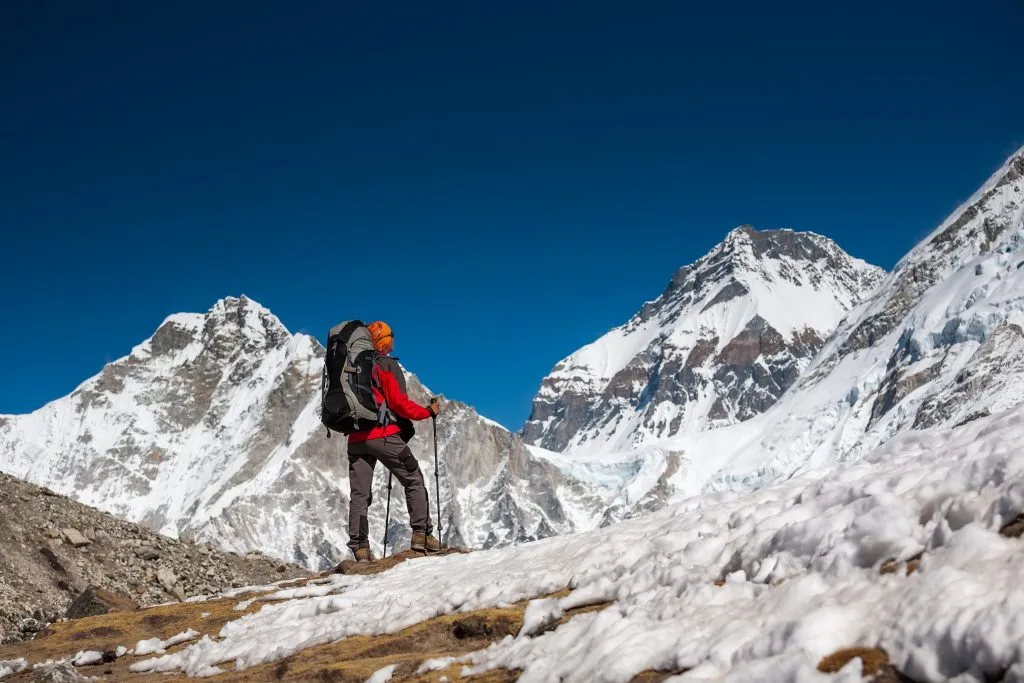
Regardless of the season, it’s essential to be prepared for varying weather conditions. The mountain weather is unpredictable, and temperatures can experience a significant drop as you gain altitude. Always check the weather forecast, consult with local experts, or book the trip with a trekking agency before setting out.
How to reach the starting point of the hike?
The primary starting point for the Everest Base Camp trek is Lukla. Here’s how you can reach Lukla from Kathmandu, Nepal’s capital:
Kathmandu to Lukla Flight: The most direct and quickest way to get to Lukla is by taking a flight from Kathmandu’s Tribhuvan International Airport to the Tenzing-Hillary Airport in Lukla. The airport in Lukla is often dubbed one of the most challenging in the world due to its short runway and the surrounding mountainous terrain. It’s advisable to book the earliest flight of the day, as wind conditions in the afternoon can lead to flight cancellations or delays. Always factor in potential delays or cancellations when planning your itinerary.
Kathmandu to Salleri to Lukla: If you’re looking for a more extended trekking experience or aiming to save on costs, you can travel overland from Kathmandu to Salleri by bus or jeep. From Salleri, it’s a 2 to 3-day trek to Lukla. This route not only saves on flight costs but also offers a more profound experience of the local landscapes and cultures.
Accommodation
Teahouses are the quintessential accommodation choice for trekkers journeying through the Everest Base Camp route. These traditional lodgings, often run by local Sherpa families, seamlessly blend the warmth of Nepalese hospitality with the rustic charm of the Himalayas.
Upon entering a teahouse, trekkers are typically greeted by a communal eating area, often centered around a stove that emanates warmth, providing a cozy respite from the mountain chill. The rooms, though simple, offer a comfortable space to rest. They usually feature two single beds with basic bedding, and while the provided blankets are snug, it’s a good idea for trekkers to carry their sleeping bags, especially during the colder months.
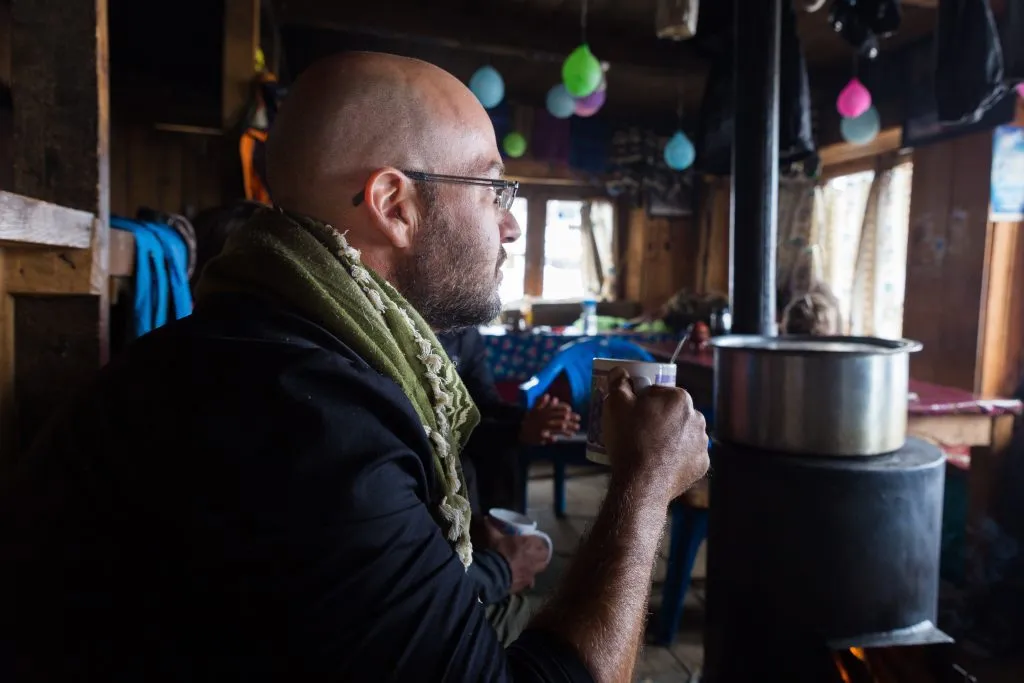
However, it’s worth noting that while teahouses in popular spots like Lukla or Namche Bazaar might offer a few more amenities, as one progresses higher into the mountains, the facilities can become more basic. For instance, while lower altitude teahouses might offer showers (sometimes hot) for an additional fee, those higher up might only provide a bucket of lukewarm water.
Similarly, while toilets in most teahouses are of the Western style, some might only have traditional squat toilets, especially off the beaten path.
Food
Trekking the challenging yet awe-inspiring trails to the Everest Base Camp is not just a journey through the towering peaks and deep valleys of the Himalayas; it’s also a culinary adventure that offers trekkers a taste of the region’s rich and diverse food culture.
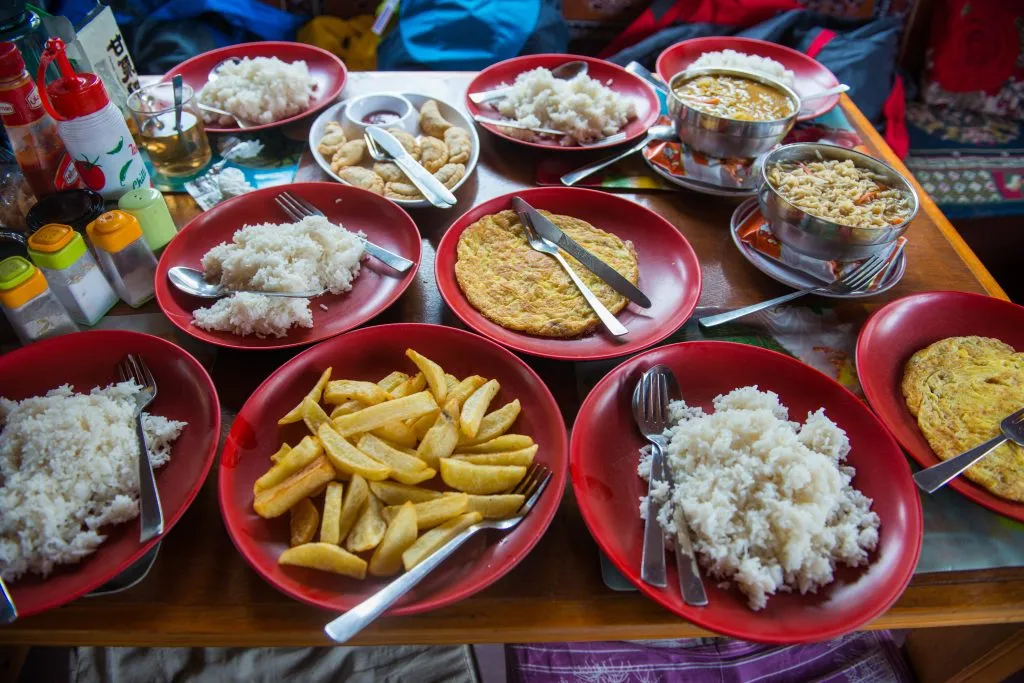
The teahouses and lodges along the trekking route serve as vital pit stops, providing nourishing meals essential for the arduous journey ahead. These eateries offer a blend of traditional Nepalese and Tibetan dishes, coupled with familiar global favorites, ensuring trekkers receive both the comfort of home flavors and the thrill of new culinary experiences.
Typical breakfast items:
- Toast: A common breakfast item, usually served with butter and a variety of jams.
- Eggs: A great source of protein, essential for muscle repair and recovery. They can be cooked according to your preference, such as boiled, scrambled, or made into an omelet.
- Pancakes: Often served plain or with toppings like honey, jam, or lemon.
- Porridge: Typically made from oats or cornmeal, porridge is a warm and filling meal, often sweetened with sugar and sometimes served with fruits.
- Tsampa: A traditional Tibetan food made from roasted barley flour, often mixed with tea and butter. Tsampa is easy to digest and provides quick energy.
Lunch/Dinner:
- Dal Bhat: This staple Nepalese meal includes lentil soup (Dal), rice (Bhat), vegetable curry, and pickles. It provides a balanced intake of protein, carbohydrates, and nutrients, usually served with free refills in teahouses.
- Chowmein: A stir-fried noodle dish with mixed vegetables and sometimes chicken or egg. It offers a blend of carbohydrates and proteins and is a flavorful choice.
- Thukpa: A hot noodle soup of Tibetan origin, Thukpa typically contains vegetables and meat (often chicken or yak). It’s comforting, warm and can help with hydration at high altitudes.
- Momos: These are Tibetan-style dumplings filled with either vegetables or meat and served with a dipping sauce. Momos are a local favorite.
- Pasta: Pasta dishes vary but are generally served with a simple tomato or cheese sauce.
- Pizza: The pizza served on the trail will be a simple variant, usually with a thin crust and basic toppings like cheese, tomato, and perhaps some vegetables or canned tuna.
- Sandwiches: These could contain a variety of fillings like cheese, canned tuna, tomatoes, or cucumbers.
- International Dishes: Some teahouses may serve familiar international dishes like spaghetti or mac & cheese. These are usually more readily available at lower altitudes and provide a comforting taste of home.
While the meals on the Everest Base Camp trek are basic, they are designed to provide the energy and nutrients necessary for the physical demands of trekking at high altitudes. The meals are part of the adventure, and trying local dishes is an integral part of the experience.
Required permits
Trekking to the Everest Base Camp is a dream for many, but before embarking on this incredible journey, it’s essential to ensure you have the necessary permits. These are the required permits for the Everest Base Camp trek:
1. Khumbu Rural Municipality Permit:
- Description: This permit is mandatory for all trekkers, including SAARC nationals.
- Cost: NPR 2,000 per person for the first four weeks. After four weeks, the permit cost increases to NPR 2,500 per person.
- Where to Obtain: In Lukla upon arrival or in Monjo at the Sagarmatha National Park Counter for trekkers arriving from Jiri or Salleri.
2. Sagarmatha National Park Entry Permit:
- Description: This permit allows trekkers to enter the Sagarmatha National Park, a UNESCO World Heritage Site.
- Cost: Foreign nationals: NPR 3,000 per person.
- Where to Obtain: The Nepal Tourism Board Office in Kathmandu or The Sagarmatha National Park Entry Gate in Monjo.
Beginning in September, solo trekking in Nepal has seen significant changes. The country’s Ministry of Home Affairs announced that travelers visiting the Himalayan country will now be required to hire support staff, either in the form of a porter or a guide.
This policy shift was primarily in response to safety concerns, aiming to ensure travelers remain safe while in remote areas of the country. It also aims to provide more job opportunities for local porters and guides. This regulation does not affect groups of hikers, as they were already required to travel with a government-approved trekking agency.
If you decide to join an organized tour, the tour operators will handle all the permit requirements for you. It means you won’t have to worry about obtaining the necessary permits yourself, making the preparation process smoother and more convenient.
Challenges of the EBC trek
Like any high-altitude hike, the Everest Base Camp trek comes with its set of challenges. One of the most significant concerns trekkers face is altitude sickness, or Acute Mountain Sickness (AMS). As trekkers ascend the rugged trails leading to EBC, the air becomes thinner, and oxygen levels drop.
Altitude sickness
Symptoms of AMS can manifest within six to 24 hours of reaching altitudes above 2,400 meters. These symptoms range from headaches, fatigue, and dizziness to more severe conditions like fluid accumulation in the lungs or brain.
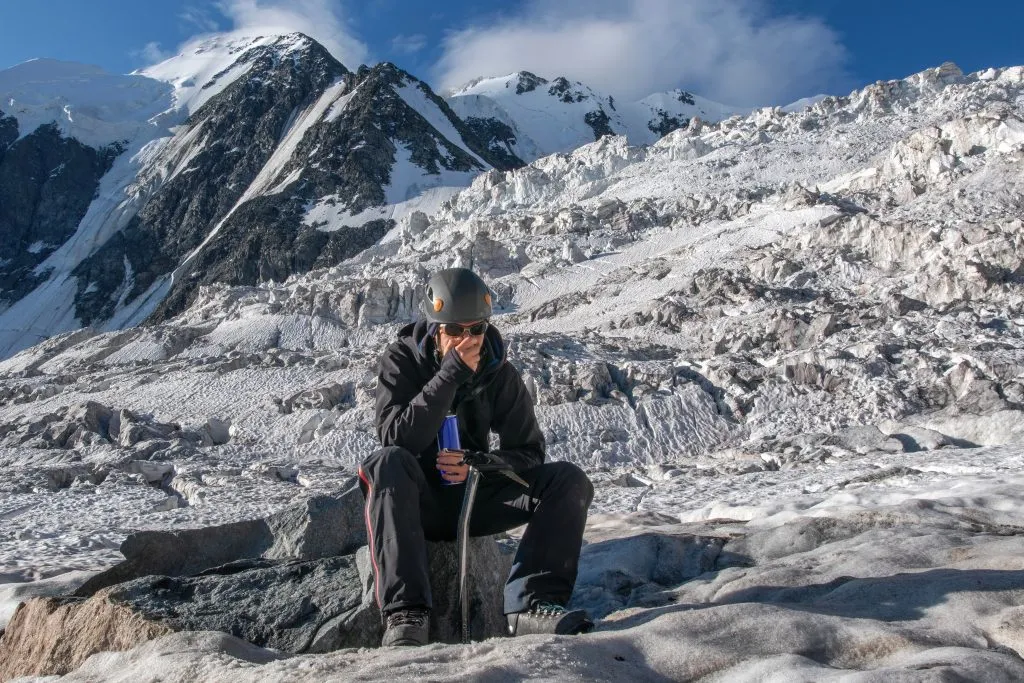
To mitigate the risk of AMS, it’s crucial to acclimatize properly. This virtually means allowing at least one day of rest for every 600 meters of altitude gained. Drinking 4-5 liters of water daily and considering medications like Diamox after consulting with a doctor can also help in prevention.
Stomach issues
Beyond the challenges of altitude, the local cuisine, while delicious, can sometimes lead to stomach issues for trekkers unaccustomed to Nepalese food. It’s essential to ensure that the water you drink is purified and to be cautious with raw foods. Regular hand sanitization and choosing freshly cooked meals over raw items can significantly reduce the risk of stomach ailments.
Emergencies and insurance
But the challenges of the EBC trek aren’t just physical. The remote nature of the trek means that if something goes wrong, help might not be immediately at hand. Therefore, having comprehensive travel insurance covering high-altitude trekking and emergency evacuations is paramount.
In the event of severe AMS or other emergencies, trekkers might need to be evacuated by helicopter to Kathmandu for medical treatment. It’s a reminder of the rugged and remote nature of the Himalayas, even on a well-trodden path like the EBC trek.
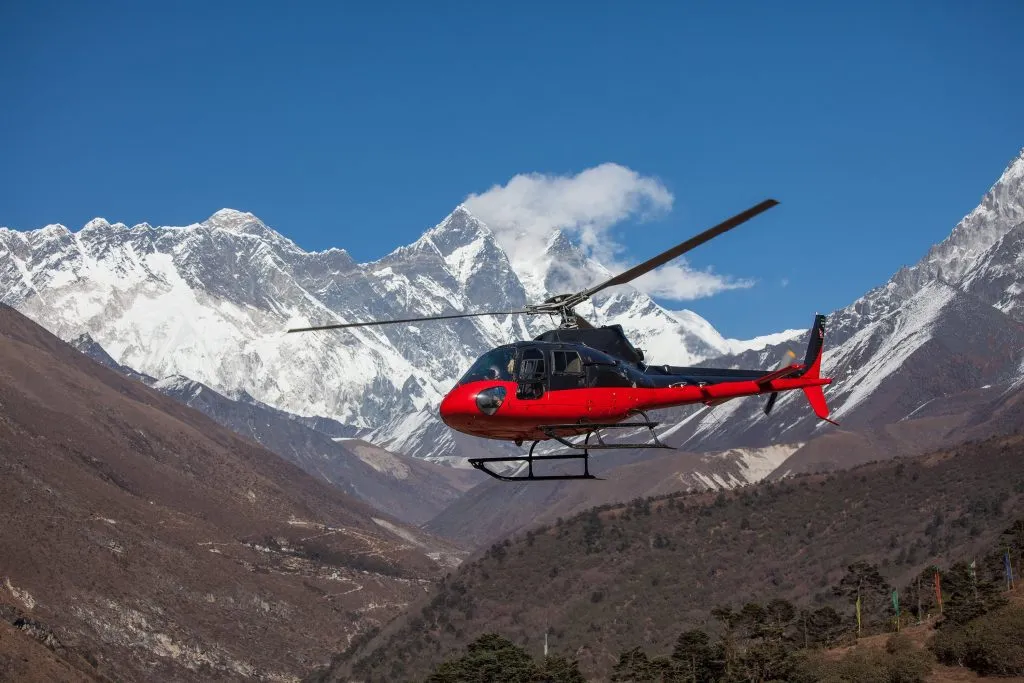
Recent regulations in Nepal have also emphasized the importance of safety. Solo trekkers, who once roamed the trails of the Himalayas independently, are now required to hire support, be it in the form of a porter or a guide. This change not only ensures the safety of the trekkers but also provides employment opportunities for the local Sherpa community.
In conclusion, it’s essential to approach the trek with respect and preparation. The mountains are unforgiving, but with the right precautions, the journey to the base of the world’s highest peak can be a safe and unforgettable experience.
How to approach the trek
With a guide/group
Trekking the Everest Base Camp with a guide or as part of a group offers a structured and supportive experience. Local guides, often hailing from the Sherpa community, bring a wealth of knowledge about the region’s culture, history, and natural wonders. They can also assist in navigating the local customs and language barriers.
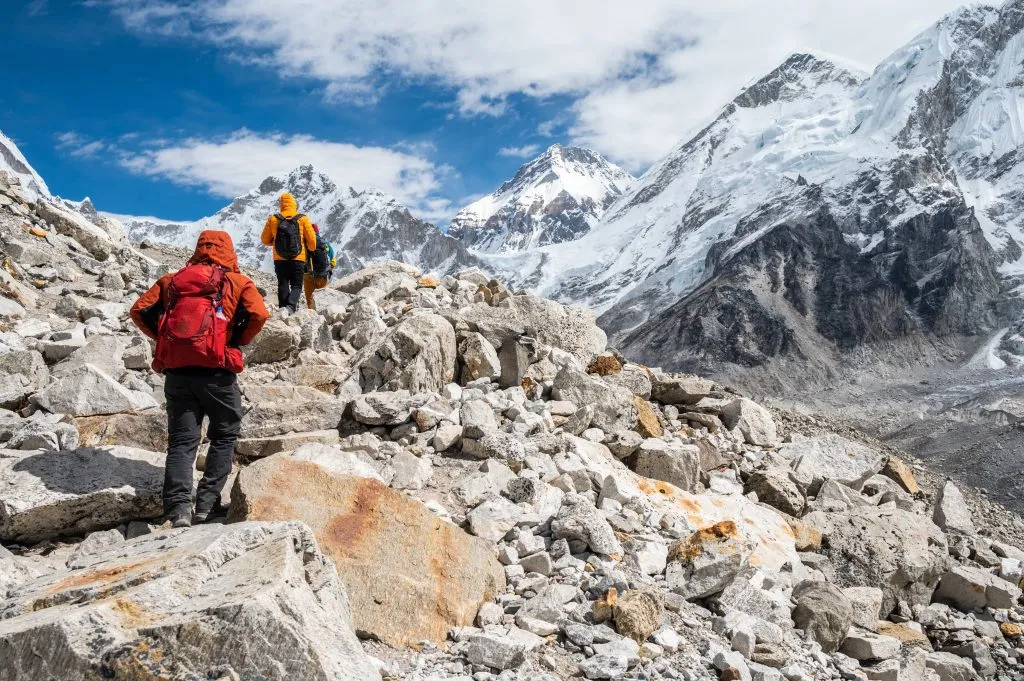
Group hikes, often organized by reputable companies in Kathmandu, foster a sense of community and shared adventure. For those interested, our company offers guided treks with experienced local professionals who ensure a safe and enriching journey.
With a porter
Trekking with a porter offers a blend of independence and local immersion. Porters, hired from Kathmandu or Lukla, carry the bulk of your gear, allowing you to fully engage with the breathtaking landscapes of Nepal without the weight of a heavy backpack. This doesn’t only make the trek more enjoyable but also supports the local economy by providing employment opportunities.
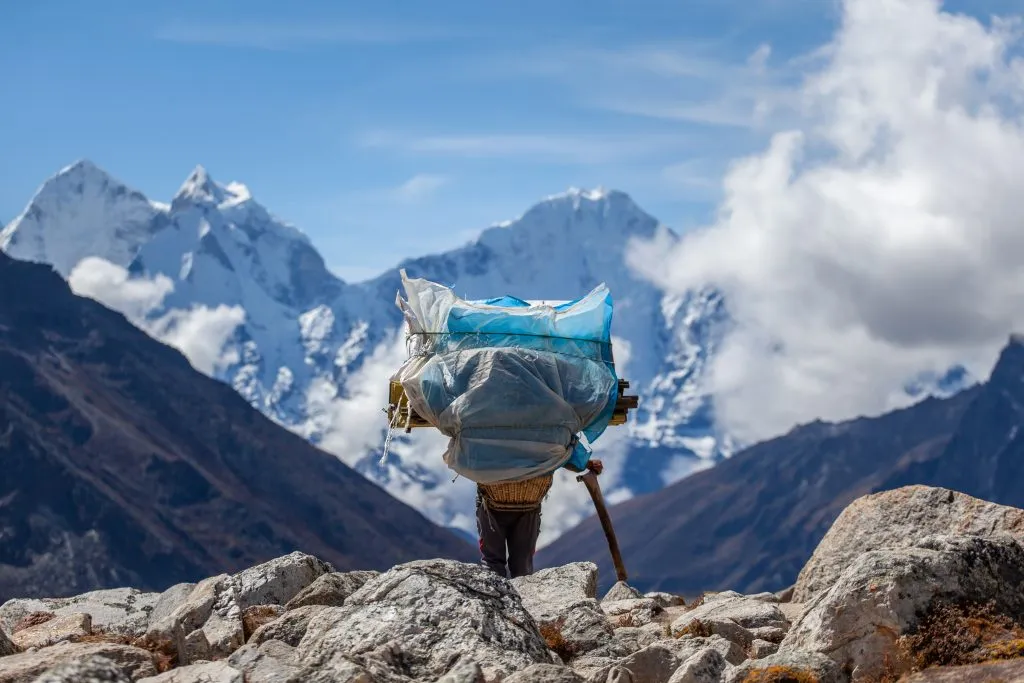
Alone
For those with a deep sense of adventure and familiar with high-altitude trekking, the Everest Base Camp trek can be undertaken solo. It offers a unique opportunity for introspection amidst the grandeur of the Himalayas. However, it’s essential to note that while the new tourist laws requiring a guide or porter don’t currently apply to the Everest region, this might change in the near future. Solo trekkers should stay updated on Nepal’s trekking regulations.
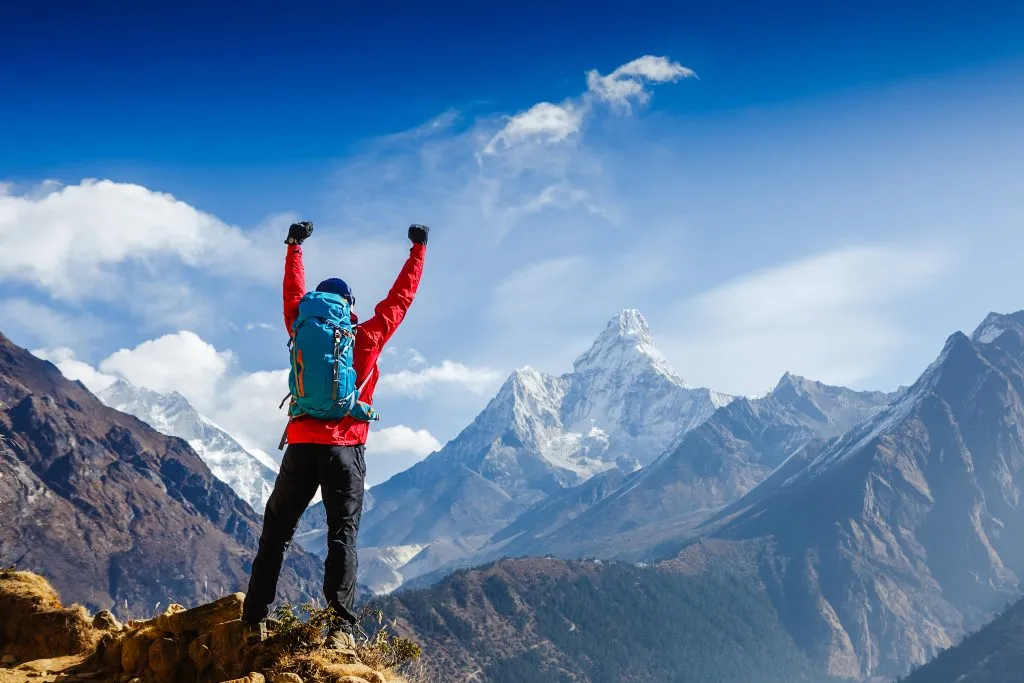
Typical EBC trek itinerary
For those who value flexibility and autonomy, trekking the Everest Base Camp route independently might be the way to go. This approach allows you to set your own pace and choose your own path. Depending on your speed, acclimatization, and stops, the trek can take anywhere from 12 to 14 days.
Opting to trek with a guide or as part of a group offers a more structured experience. These treks typically come with a fixed itinerary, ensuring proper acclimatization and covering key highlights of the region. With all logistics taken care of, you can focus solely on the breathtaking landscapes and cultural experiences.
A typical Everest Base Camp trek would look like this:
- Day 1: Arrival and exploration in Kathmandu.
- Day 2: Flight to Lukla; trek to Phakding.
- Day 3: Trek to Namche Bazaar.
- Day 4: Acclimatization in Namche Bazaar.
- Day 5: Trek to Tengboche.
- Day 6: Journey to Dingboche with a visit to Pangboche Monastery.
- Day 7: Acclimatization in Dingboche.
- Day 8: Climb Dungla Mountain; trek to Lobuche.
- Day 9: Trek to Gorakhshep; visit Everest Base Camp.
- Day 10: Hike to Kala Patthar; return to Pheriche.
- Day 11: Descend to Namche Bazaar.
- Day 12: Return trek to Lukla.
- Day 13: Flight back to Kathmandu; evening cultural program.
- Day 14: Departure from Kathmandu.
For more details, you can look into our program for the Everest Base Camp trek.
Cost of hiking the EBC trek
It’s essential to understand that the EBC trek tends to be more expensive than other popular treks in Nepal, such as the Annapurna Base Camp trek. This higher cost is primarily due to the unique transportation expenses, especially the return flight from Kathmandu to Lukla.
The cost of your trek to Everest Base Camp will largely hinge on the type of trek you opt for. Whether you’re planning to embark on this journey with a tour, with your own crew, or completely independently, the costs will vary. Package tours with international agencies typically hover around the $1800 mark. Local agencies in Nepal offer a similar price range. Opting for such a comprehensive package ensures that trekkers receive the best value for their money, coupled with a hassle-free experience.
For those considering independent treks, the financial landscape looks a bit different. Trekking with a guide and porter will set you back approximately $1500. If you decide to journey with just a guide, the cost is around $1200, while choosing to have only a porter will cost about $1000.
However, for adventurers who prefer to trek without assistance, the cost would be roughly $900. It’s worth noting that while trekking independently might be lighter on the wallet, it demands thorough planning and preparation.
In conclusion, while the cost of the EBC trek can vary based on several factors, it’s paramount to select an option that guarantees safety, comfort, and an unforgettable experience.
How to prepare
Fitness
The EBC trek is a challenging hike up and down the sides of prominent mountains, often with a noticeable weight on your back. Some days can be longer than others, and understanding the elevation gains on the trail will help you prepare for the daily challenges.
Specific physical conditioning is vital. Your endurance training and leg strength must be your top priority. You’ll also profit from improving fitness levels by building upper body strength, flexibility, and cardiovascular conditioning. But your utmost goal should be reaching the point where you become comfortable walking at high altitudes with a backpack for a long time.
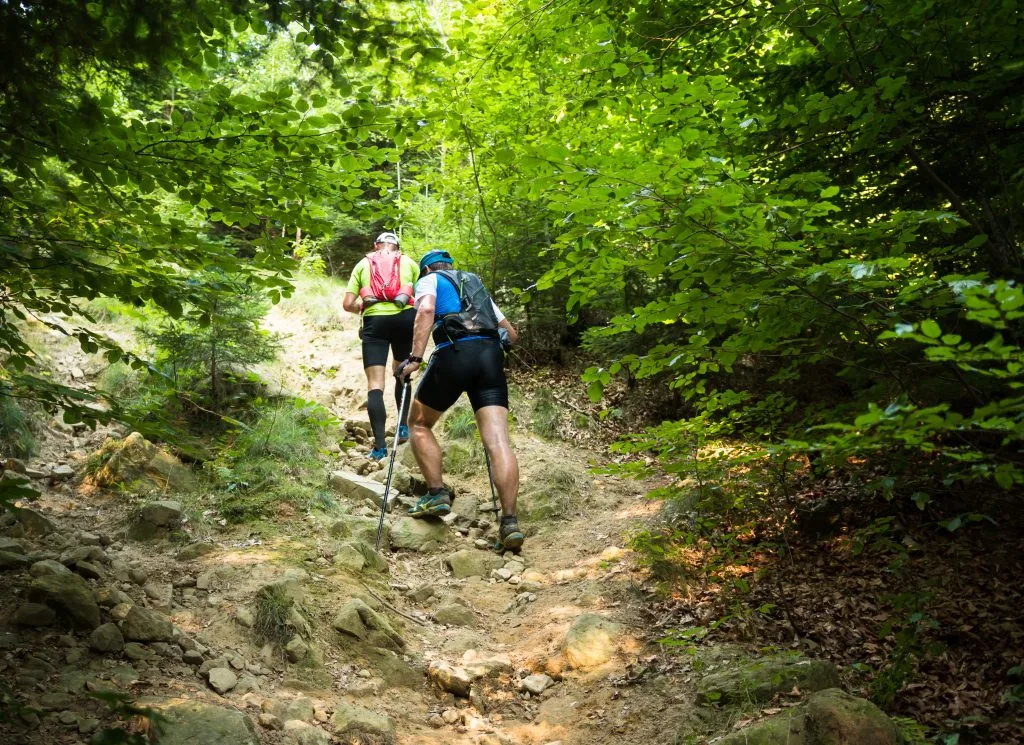
Walking uphill for 3-5 hours at least twice a week with a weighted rucksack will help you prepare to carry weight while walking. Start with a smaller load, but try to build it up over weeks and months of your preparation. As such, you’ll eventually become more and more comfortable with the burden, and you are less likely to get into a crisis starting on the EBC trek.
Remember, your body will have to acclimatize to the altitude, and you have to account for that when preparing for the trek at home. Walking uphill with a heavier backpack for multiple hours shouldn’t feel overly challenging by the time you’re traveling to Nepal.
Trekking with an established agency has its perks in this department, as you’re assigned a porter who can carry up to 15 kg of load for two trekkers.
Packing and gear selection
Packing for the Everest Base Camp trek requires careful consideration of the unique challenges and conditions of this high-altitude adventure. From essential hiking gear to personal belongings, it’s essential to pack items to ensure your comfort, safety, and enjoyment throughout the trek. Here’s a comprehensive packing list to guide you:
Hiking Gear
- Backpack (30-50 liters)
- Hiking Poles
- Water Bottle
- Headlight
Clothing and Body Wear
- Down Jacket
- Sleeping Bag
- Light Warm Hiking Trousers (more than one pair)
- Warm Liner
- Towel
- Warm Hat
- Sun Hat
- Fleece/Jacket
- Windproof Jacket
- Long and Short Sleeve Hiking Shirts (3-4 items)
- Buff
- Sturdy Hiking Boots
- Gloves
- Warm Hiking Socks (4-5 pairs)
- Flip Flops/Sandals
Personal hygiene
- Sun Cream
- Sunglasses
- Lip Guard
- Toothbrush
- Face Wash Soap
- Sanitizer
- Prescription Medicine
- Water Purifier Tablet/Lightweight Filter
- Toilet Paper
Personal Belonging Items
- Passport
- Cash
- Visa/Credit Card
- Power Bank and Charger
Tips & Recommendations
- Spend extra days in Kathmandu after the trek
Spending extra days in Kathmandu after the trek provides a buffer against unpredictable weather conditions that might delay flights back from Lukla. It also offers a chance to unwind and explore the rich cultural heritage of Kathmandu. Whether visiting historical sites like the Kathmandu Durbar Square or indulging in local cuisine, these extra days can turn potential stress into an enjoyable extension of your adventure.
- Bring dried or freeze-dried food with you
Carrying dried or freeze-dried food can be a lifesaver on the Everest Base Camp Trek. While local tea houses offer meals, having your favorite dried fruits or snacks ensures you have something familiar and nutritious to eat. It adds variety to your diet and can be particularly comforting if you have specific dietary preferences or restrictions. Plus, these lightweight food options won’t add much to your pack’s weight.
- Expect flight delays to and from Lukla
Lukla Airport is known for its unpredictable weather, leading to frequent flight delays or even cancellations. Expecting these delays and planning accordingly can save you from unnecessary stress. Whether bringing a good book to read during the wait or scheduling your international flight with ample time after your expected return from Lukla, anticipating these delays allows you to remain calm and enjoy your journey to the fullest.
- Carry low-weight entertainment items
After a long day of trekking, relaxation, and entertainment are essential. Carrying lightweight entertainment items like books or Uno cards can provide much-needed leisure time. Playing cards with fellow trekkers can foster camaraderie, while a good book can offer a solitary escape. These small additions to your pack can greatly enhance your overall trekking experience.
- Buy non-essential gear in Kathmandu for lower prices
Kathmandu is a hub for trekking gear, offering a wide variety at competitive prices. From clothing to accessories, you can find quality items that suit your budget. We suggest you limit your shopping spree to non-essential equipment only, as their quality might be questionable. You wouldn’t want your gear failing when your life or well-being depends on it.
Using the services of an established trekking company
Throughout this comprehensive guide, we’ve explored the many facets of the Everest Base Camp trek, highlighting the unique challenges and rewards. From the detailed itinerary to essential packing lists, physical preparation, and insider tips, we’ve covered everything you need to know.
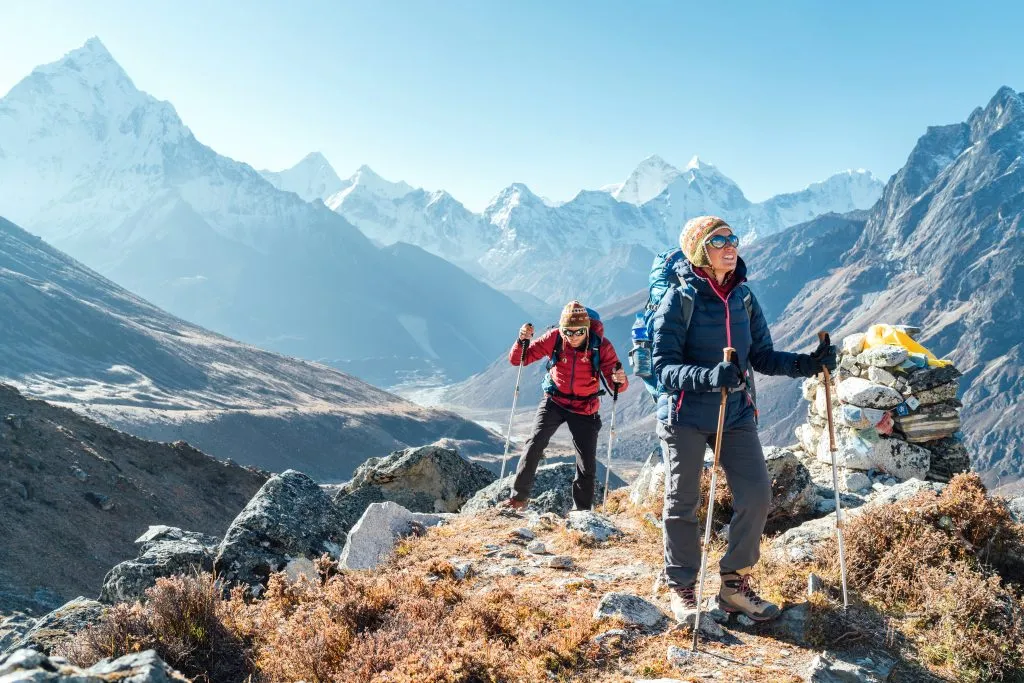
One key takeaway is the value of trekking with an established trekking company. With expert guides, carefully planned itineraries, and all-inclusive services, you can focus on the adventure itself, knowing that every detail has been taken care of.
The Everest Base Camp trek is no small feat, and we know it can feel overwhelming to plan and prepare for such an adventure. If you’ve found yourself nodding along with our guide, thinking about permits, acclimatization, or what to pack, you’re not alone.
We’ve been there, and we’ve put together a trekking program that might be the answer to those questions. Feel free to check what we offer for the Everest Base Camp Trek. Who knows? It might be the perfect fit for your Himalayan adventure. Happy trekking!



